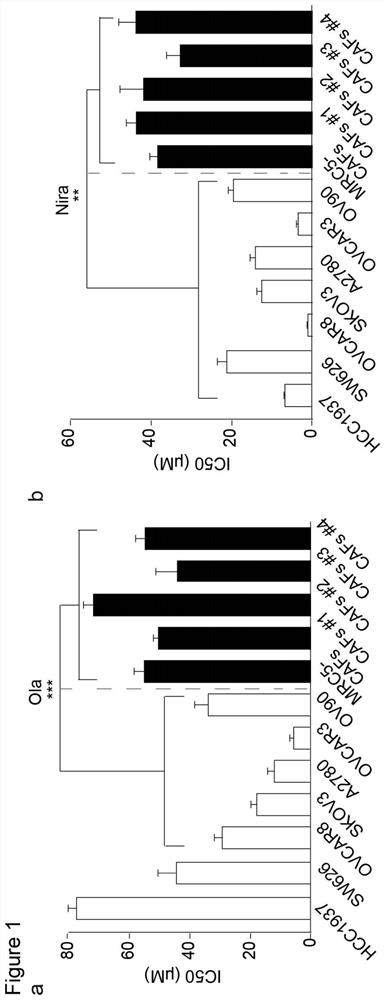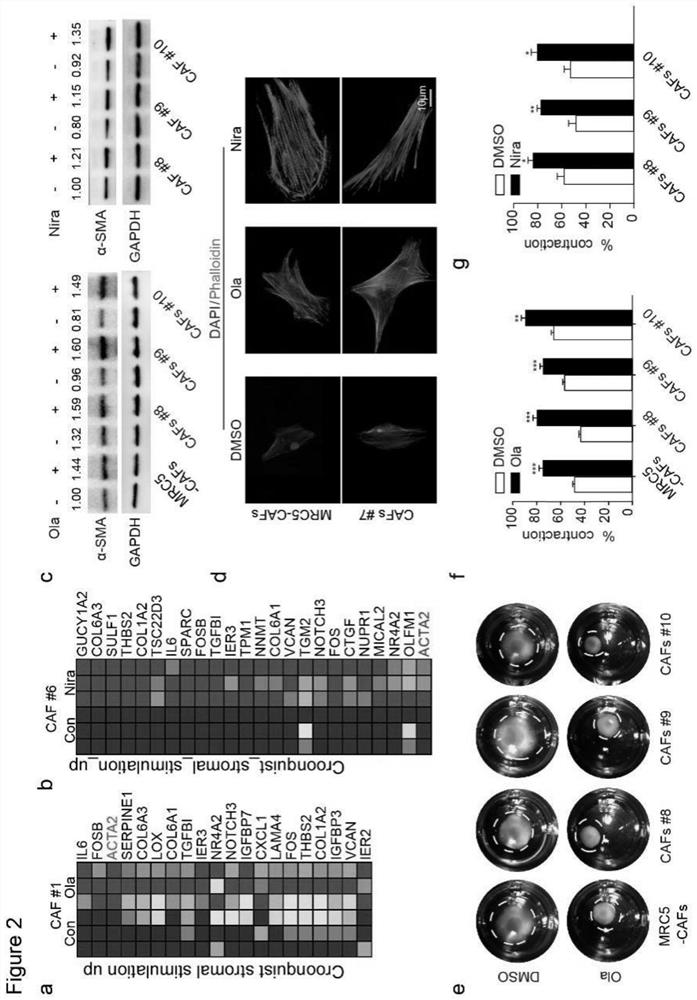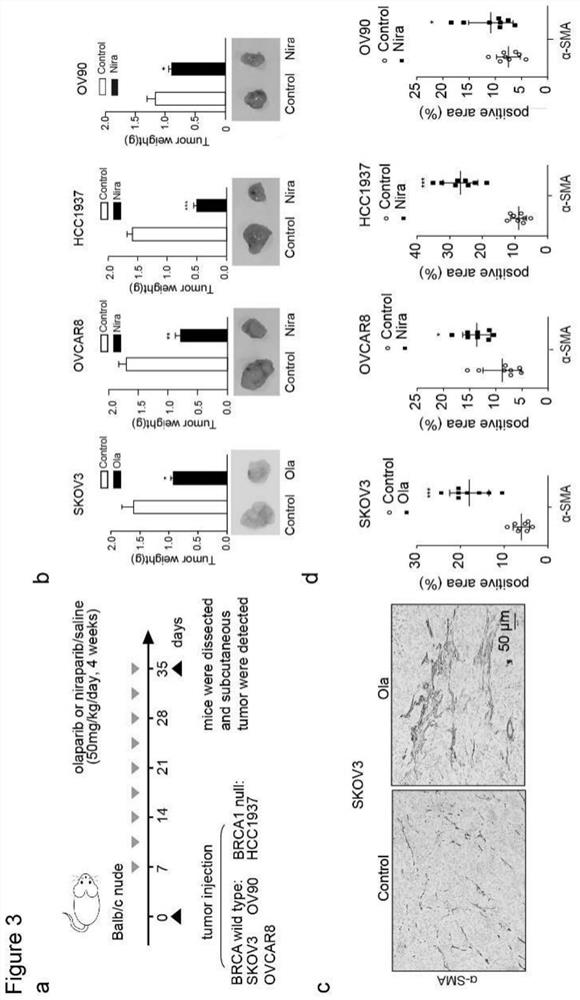Markers of drug resistance of cancer cells, combination of preparations for reversing drug resistance of cancer cells and their applications
A cancer cell, drug-resistant technology, applied in the field of oncology, can solve problems such as impact
- Summary
- Abstract
- Description
- Claims
- Application Information
AI Technical Summary
Problems solved by technology
Method used
Image
Examples
experiment example 1
[0050]Experimental example 1 Ovarian cancer cell line culture
[0051] Ovarian cancer cell lines and medium: OV90, OVCAR3, A2780, OVCAR8 and SKOV3 (all purchased from ATCC, USA) were cultured in McCoy's 5A medium (Gibco, USA), and HCC1937 and SW626 were cultured in L15 (Gibco, USA) MRC5 was cultured in MEM (Gibco, USA) medium.
[0052] All of the above growth media were supplemented with 1% penicillin / streptomycin mix mixed with 10% fetal calf serum. The cells were in an adherent growth state and were cultured at 37°C with 5% CO 2 in the incubator.
experiment example 2
[0053] Experimental Example 2 Isolation and Purification of Human Ovarian Cancer-Associated Fibroblasts (CAFs)
[0054] Take 10g of fresh ovarian cancer tissue (collected from the Department of Obstetrics and Gynecology, Tongji Hospital Affiliated to Tongji Medical College, Huazhong University of Science and Technology), rinse with normal saline for 3 times, and cut the tissue to 1mm under sterile conditions on the cell workbench 3 size. Transfer the shredded tissue pieces to a 50ml sterile centrifuge tube, add 20ml tissue digestion solution, and digest in a shaker at 37°C for 2-4h. The tissue digestion solution was prepared from serum-free DMEM / F12 (Thermo Fisher) medium, containing type I collagenase (Sigma Company) with a final concentration of 1 μg / ml and type I DNAase (Roche Company) with a final concentration of 1 μg / ml , 1% penicillin / streptomycin mixture. Stop the digestion when the tissue block shrinks significantly and the digestive juice becomes turbid, and centri...
experiment example 3
[0056] Experimental Example 3 Drug Sensitivity Determination
[0057] The CAFs cells and MRC5-CAFs obtained in Experimental Example 2 were respectively digested with trypsin to prepare single-cell suspensions, and the cells were divided into 1×10 cells per well. 4 inoculated into a sterile 96-well plate.
[0058] After 24 hours, the medium solution containing olaparib or niraparib was used to replace the well plate. After 48 hours, the cells were rinsed with PBS, and 100 μl of serum-free medium (Gibco, USA) containing 10% CCK-8 was added to each well. The 96-well plate was wrapped with light-proof paper to avoid light, and after being incubated in an incubator for 2 h, the absorbance of each well at a wavelength of 450 nm was measured with a microplate reader (Bio-Rad Laboratories). The calculation of cell activity is as follows: cell activity (%)=(drug group-blank well) OD450 / (no drug group-blank well) OD450×100%. Three secondary wells were set up for each treatment. The ...
PUM
 Login to View More
Login to View More Abstract
Description
Claims
Application Information
 Login to View More
Login to View More - R&D
- Intellectual Property
- Life Sciences
- Materials
- Tech Scout
- Unparalleled Data Quality
- Higher Quality Content
- 60% Fewer Hallucinations
Browse by: Latest US Patents, China's latest patents, Technical Efficacy Thesaurus, Application Domain, Technology Topic, Popular Technical Reports.
© 2025 PatSnap. All rights reserved.Legal|Privacy policy|Modern Slavery Act Transparency Statement|Sitemap|About US| Contact US: help@patsnap.com



